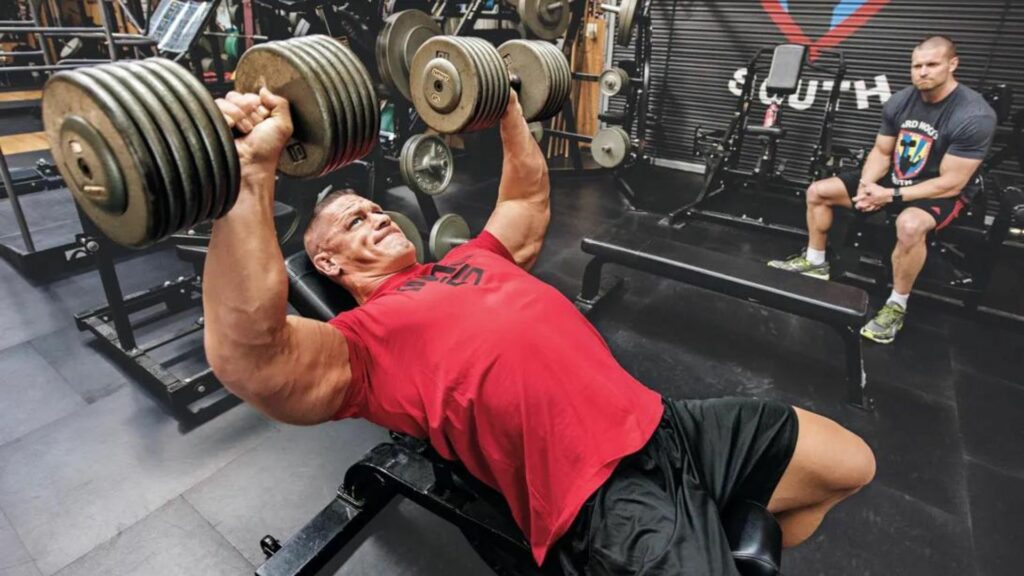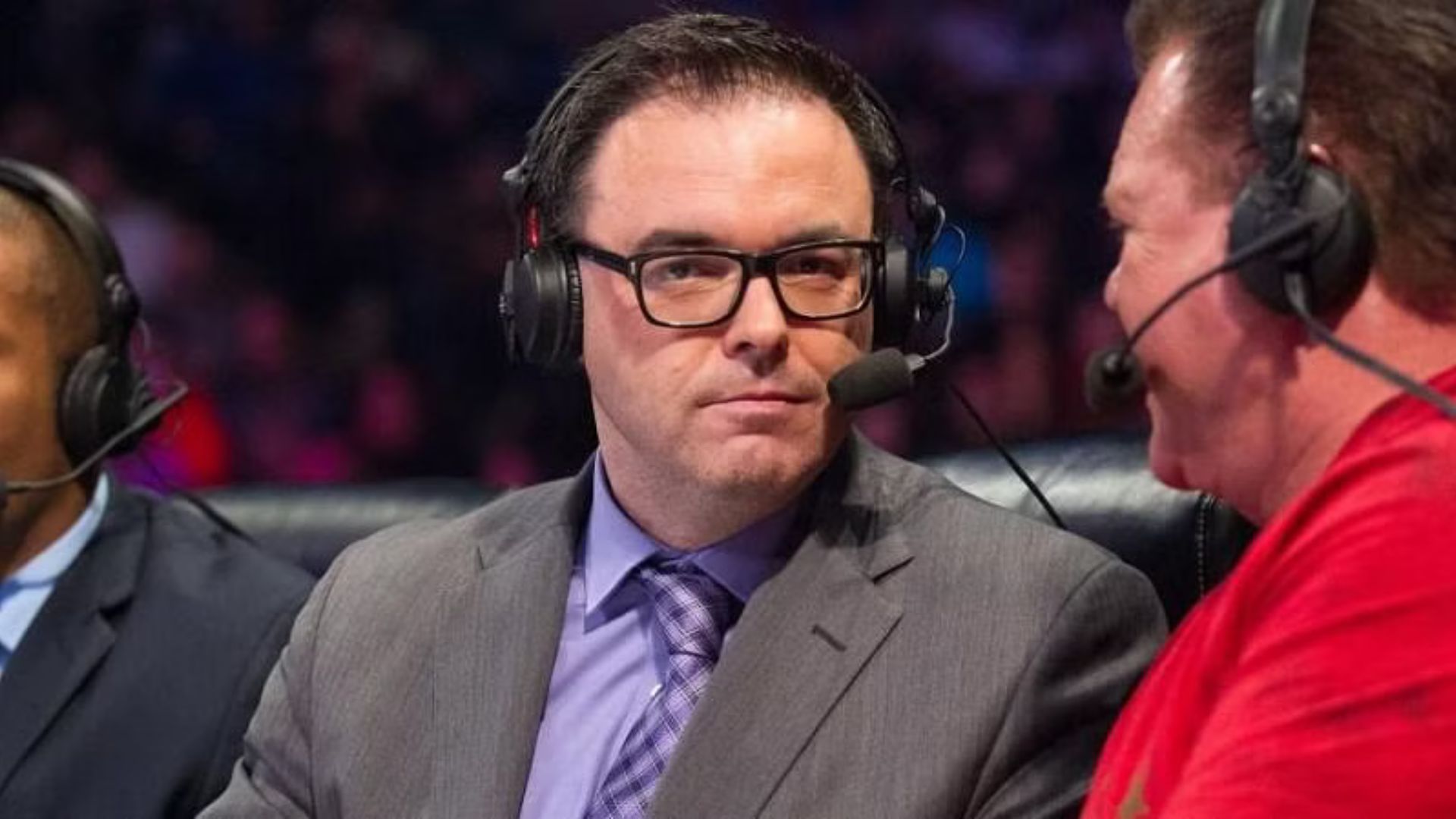
Exploring the Role of Wrestling Announcers
The world of professional wrestling is a spectacle woven from athleticism, drama, and captivating storytelling. While the wrestlers take centre stage with their high-flying manoeuvres and intense rivalries, another crucial element often goes unnoticed: the wrestling announcers. These passionate voices are the narrators of the ring, guiding viewers through the action, amplifying emotions, and shaping the overall experience.
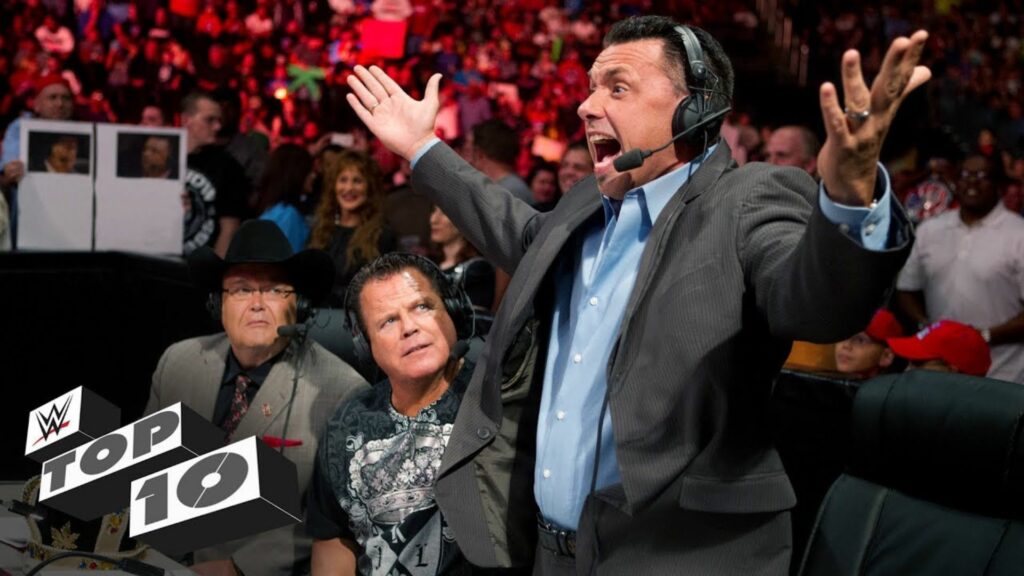
The Duties of Wrestling Announcers
Wrestling announcers wear many hats. Their primary responsibility is to call the match, providing a clear and concise play-by-play commentary of the action unfolding in the ring. They describe the moves, near falls, and momentum shifts, keeping the audience engaged and informed. But their role extends far beyond mere description.
Storytelling Through Commentary
Wrestling announcers act as storytellers. They weave narratives around the feuds, highlighting the motivations and rivalries between wrestlers. They use their voices to build anticipation for big moments, inject humour during lighter segments, and convey the drama and emotion of each match.
Heightening Excitement
A skilled wrestling announcer can elevate the entire viewing experience. They use their vocal inflexions to create excitement for big moves, generate suspense during close calls, and emphasize the drama of near falls. Their enthusiastic commentary can transform a good match into a truly memorable moment.
Character Development
Wrestling announcers can also play a role in developing wrestler characters. They might emphasize a wrestler’s strength and aggression with a booming voice, or use sarcasm to highlight a villain’s arrogance. Their commentary adds another layer to the characters, making them more relatable and engaging for the audience.
Providing Context and History
For new viewers, wrestling announcers can provide valuable context and history. They can explain the backstory behind rivalries, highlight a wrestler’s signature moves, or offer insights into wrestling terminology. This helps newcomers understand the nuances of the sport and become invested in the storylines.
Iconic Voices: Wrestling Announcers Who Shaped the Industry
The world of professional wrestling has been blessed with some truly iconic commentantors. These legendary voices have left an indelible mark on the industry, forever linked to some of wrestling’s most memorable moments:
Gordon Solie
Often referred to as “The Dean of Wrestling Announcers,” Solie was known for his flamboyant style, extensive vocabulary, and his ability to weave compelling narratives.
Gorilla Monsoon
A WWE mainstay for decades, Monsoon’s calm and authoritative voice provided a sense of legitimacy to the often-outlandish world of professional wrestling.
Howard Finkel
While not a play-by-play commentator, Finkel’s unique voice and enthusiastic ring introductions became synonymous with professional wrestling for many fans.
Jim Ross
“Good God, King!” With his iconic catchphrase and passionate commentary style, Jim Ross brought a sense of realism and urgency to his calls. Additionally, this made him a fan favourite for generations.
Jesse “The King” Lawler
Lawler’s signature southern drawl and often biased commentary, favouring heels over babyfaces, created a unique dynamic that added another layer of entertainment to matches.
The Evolution of Wrestling Announcers: The Modern Era
The role of wrestling announcers has evolved alongside the sport itself. Today’s announce teams often feature a play-by-play commentator, a colour commentator providing analysis and insight, and sometimes even an interviewer backstage. The focus on storytelling remains, but the commentary style has become more conversational and interactive. Furthermore, drawing the audience deeper into the on-screen drama.
Conclusion
In conclusion, ring announcers are the unsung heroes of professional wrestling. Their voices provide the soundtrack to the action, guide viewers through the storylines, and elevate the overall experience for fans. From the iconic voices of the past to the talented commentators of today, commentators remain an essential element in the world of professional wrestling. Additionally, they forever hold the microphone and capture the hearts of wrestling fans around the globe.
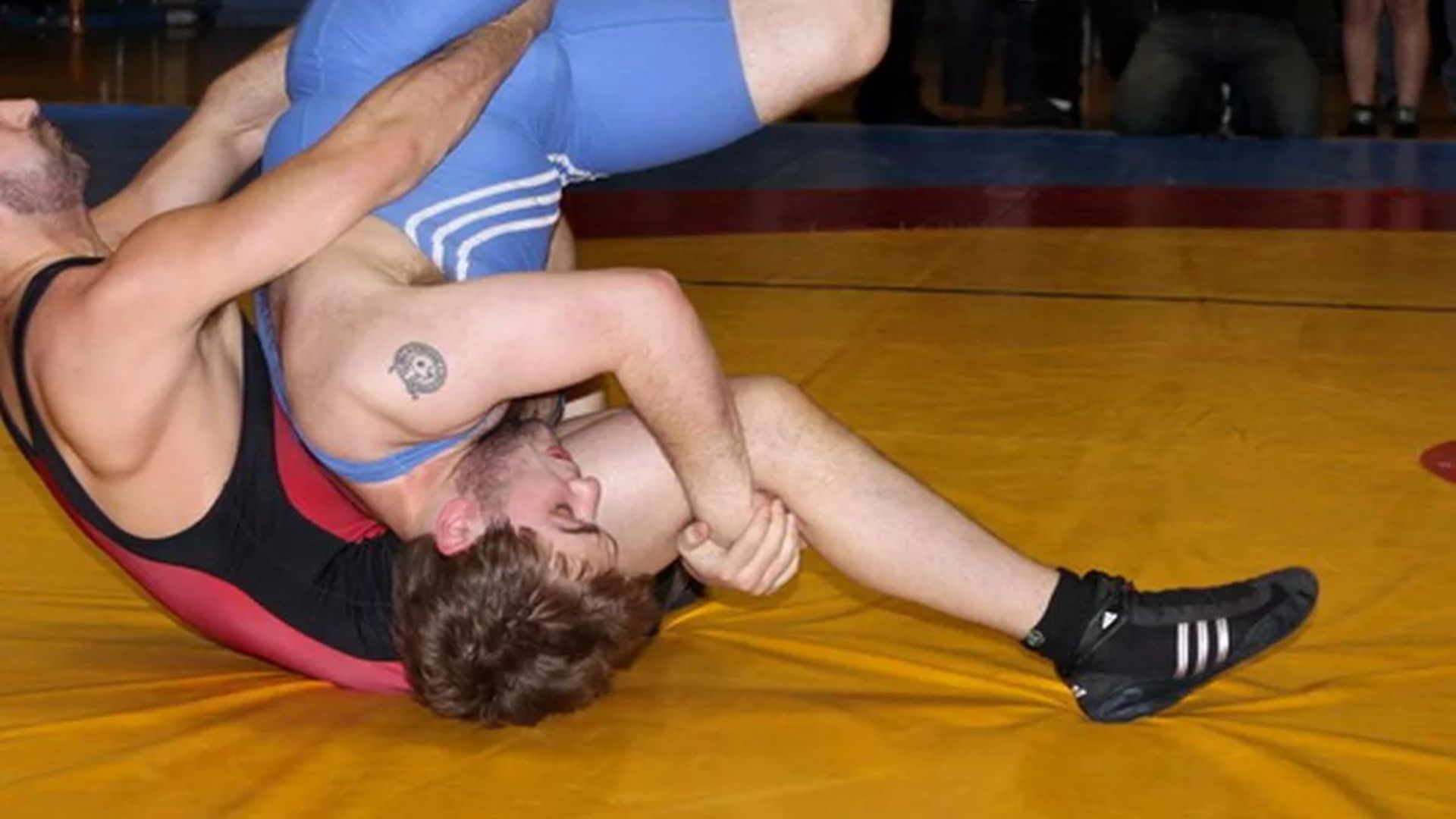
Choosing the Good Wrestling Shoes
Wrestling is a demanding sport that requires agility, strength, and proper equipment. One of the most crucial pieces of equipment for any wrestler is a pair of good wrestling shoes. These specialized shoes provide the traction, support, and flexibility needed to perform at your best on the mat. But with so many options available, choosing the right pair of good wrestling shoes can be overwhelming. Explore more!
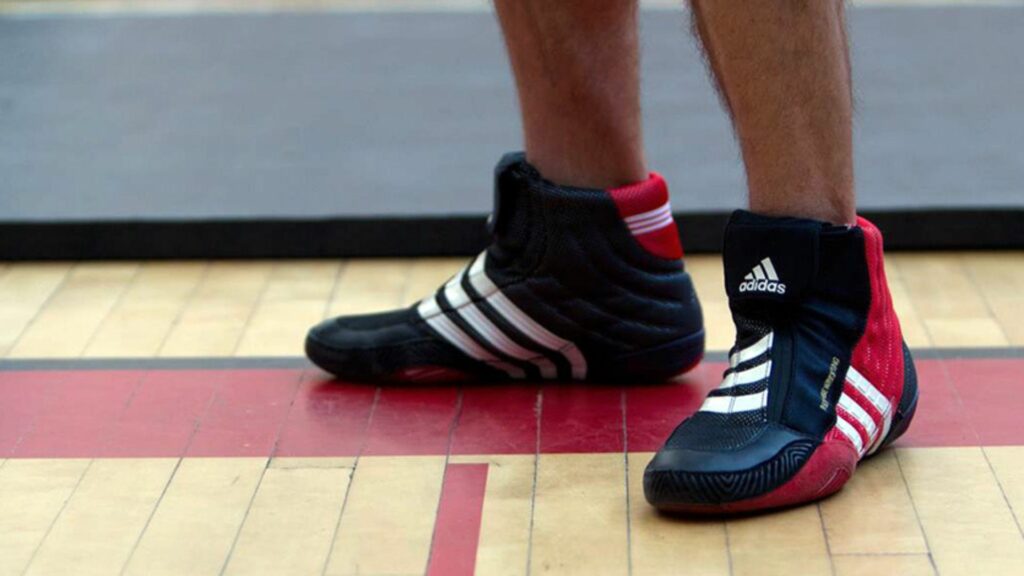
Choosing the Good Wrestling Shoes: Key Factors to Consider
To begin with, with a variety of good wrestling shoes available, here are some key factors to consider when making your selection:
Your Wrestling Style
Firstly, different wrestling styles prioritize different features. Are you an aggressive wrestler who relies on takedowns and explosive movements? Or are you more of a technical wrestler who focuses on control and positioning? Consider your wrestling style when choosing your shoes. For example, wrestlers who rely on takedowns might prioritize shoes with good ankle support and aggressive traction patterns, while technical wrestlers might prefer lighter and more flexible shoes.
Ankle Support
Additionally, ankle injuries are a common concern in wrestling. Good wrestling footwear should offer sufficient ankle support to minimize the risk of rolling or spraining your ankles. Look for shoes with high tops or ankle straps that provide stability and prevent excessive lateral movement.
Fit
A proper fit is essential for optimal performance and comfort. Furthermore, good wrestling shoes should fit snugly around your foot without being too restrictive. Your toes should have some wiggle room, but your heel should feel secure. It’s important to try on different sizes and brands to find the perfect fit.
Sole Material
The sole of wrestling footwear plays a critical role in providing traction. Look for shoes with a high-quality rubber sole that offers a good grip on the mat. Consider the type of wrestling surface you typically compete on – some soles are better suited for smooth mats, while others provide more grip on rougher surfaces.
Breathability
As mentioned earlier, breathability is crucial for comfort and hygiene. Choose the right wrestling shoes made from breathable materials like mesh or synthetic fabrics that allow your feet to breathe and prevent moisture build-up.
Durability
Furthermore, wrestling shoes go through a lot of wear and tear. Invest in a well-made pair of shoes from a reputable brand that can withstand the rigours of training and competition.
Popular Brands of Good Wrestling Shoes
Here are some of the most popular brands known for making good wrestling footwear:
Adidas
A leading sportswear brand, Adidas offers a wide range of wrestling shoes for all levels of wrestlers. Additionally, their shoes are known for their durability, comfort, and innovative features.
Asics
Another major player in the athletic footwear industry, Asics offers a variety of wrestling footwear designed for different wrestling styles and preferences. Their shoes are known for their lightweight design and excellent traction.
Nike
Additionally, Nike offers a smaller selection of wrestling footwear compared to Adidas and Asics, but their shoes are still popular among wrestlers who appreciate their sleek design and quality materials.
Matflex
A brand specifically focused on combat sports footwear, Matflex offers a variety of wrestling shoes known for their affordability and good value for money.
Sabotage
Another brand dedicated to combat sports footwear, Sabotage offers high-quality wrestling footwear designed for performance and durability.
Taking Care of Your Good Wrestling Shoes
Just like any other piece of athletic equipment, proper care will extend the lifespan of your good wrestling shoes. Here are some tips:
Air them out
After each use, remove the insoles and allow the shoes to air dry completely. Additionally, this prevents moisture build-up and the growth of bacteria.
Clean them regularly
Wipe down the exterior of your shoes with a damp cloth to remove dirt and sweat. You can also use a mild soap solution for a deeper clean. Avoid using harsh chemicals or submerging the shoes in water.
Store them properly
Furthermore, don’t leave your wrestling footwear crammed in your gym bag. Store them in a cool, dry place with good ventilation.
Replace the insoles
Over time, the insoles of your shoes will lose their cushioning and support. Furthermore, replace them with new insoles to maintain comfort and performance.
Conclusion
In conclusion, choosing the right pair of wrestling footwear is an investment in your performance and safety. By considering your wrestling style, the key factors mentioned above, and taking proper care of your shoes, you can find the perfect pair to elevate your game on the mat. Remember, comfort, support, and traction are the hallmarks of good wrestling shoes. So, lace up a pair that empowers you to perform at your best and dominate your next match!

New High School Wrestling Rules Impacts
The whistle blows, the crowd roars, and wrestlers lock up on the mat – but wait, something’s different! High school wrestling just got a shake-up with the introduction of new high school wrestling rules in 2024. These changes aim to make the sport more exciting for both wrestlers and spectators, with a focus on rewarding offensive moves and creating a more streamlined playing field. This article explores the potential New High School Wrestling Rules Impacts and how they might affect the sport.
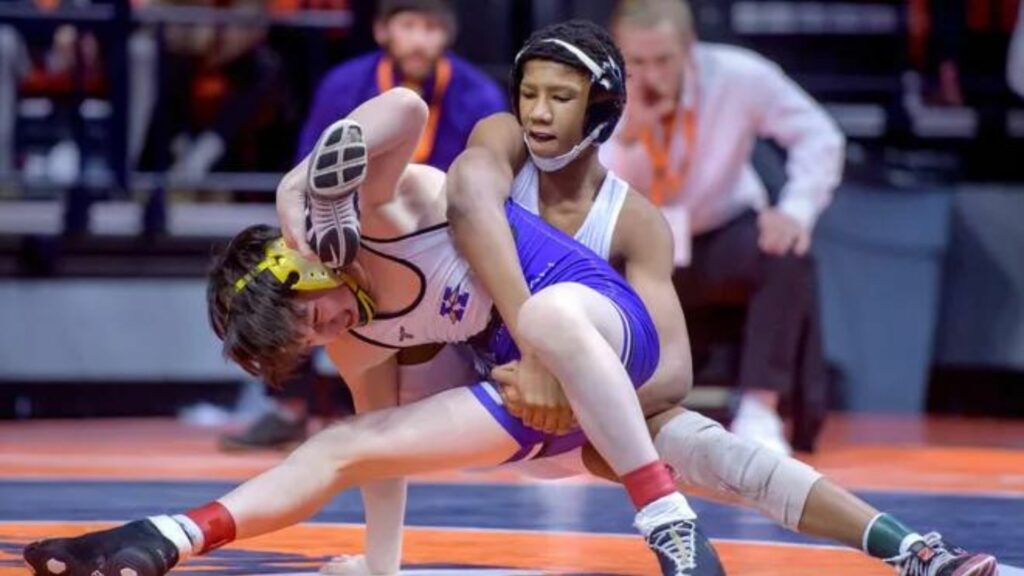
Rewarding Takedowns and Near Falls: A More Offensive Game?
One of the biggest changes involves how points are awarded. Previously, wrestlers earned two points for taking their opponent down to the mat (takedown). Under the new high school wrestling rules, takedowns are now worth a whopping three points! This shift incentivizes wrestlers to actively take down their opponents and control the match on the ground.
This change may lead to wrestlers working harder to secure a pin, the ultimate victory in wrestling. By rewarding dominance and offensive manoeuvres, the new high school wrestling rules have the potential to create more high-scoring and action-packed matches.
Simplifying Out-of-Bounds Calls: Less Confusion, More Focus
Another significant change tackles the often-debated issue of out-of-bounds calls. Previously, both wrestlers needed two points of contact outside the wrestling mat to be considered out-of-bounds. This could lead to confusion for wrestlers, referees, and spectators alike.
With the new high school wrestling rules, things are much simpler. Now, only one point of contact from either wrestler outside the boundary line constitutes out-of-bounds. This clearer rule should reduce confusion and allow for more consistent officiating throughout competitions.
Farewell 10-Foot Circle, Hello Focus on Center Mat
The Positive Impacts of the New High School Wrestling Rules
The new high school wrestling rules are expected to have a multifaceted impact on the sport. Let’s explore some possibilities:
More Exciting Matches
By rewarding takedowns and near falls more heavily, the rules might encourage a more offensive wrestling style. This could lead to more exciting matches with quicker scoring and potentially more pins.
Shift in Strategies
Furthermore, wrestlers and coaches may need to adapt their strategies to take advantage of the new scoring system and out-of-bounds rules. This change could showcase a more diverse range of wrestling styles.
Focus on Offense
The emphasis on takedowns and near falls may lead wrestlers to prioritize offensive manoeuvres while still maintaining good defence.
Smoother Officiating
Additionally, the clearer out-of-bounds rule should minimize disruptions and arguments, allowing referees to focus on officiating the match itself.
Of course, there will likely be an adjustment period as wrestlers, coaches, and officials adapt to the new high school wrestling rules. However, these changes have the potential to make high school wrestling even more thrilling and strategically diverse for everyone involved.
Conclusion
In conclusion, the introduction of the new high school wrestling rules marks a new chapter for high school wrestling. With a focus on rewarding offensive manoeuvres, creating a clearer playing field, and potentially leading to a more exciting game, these changes have the potential to make the
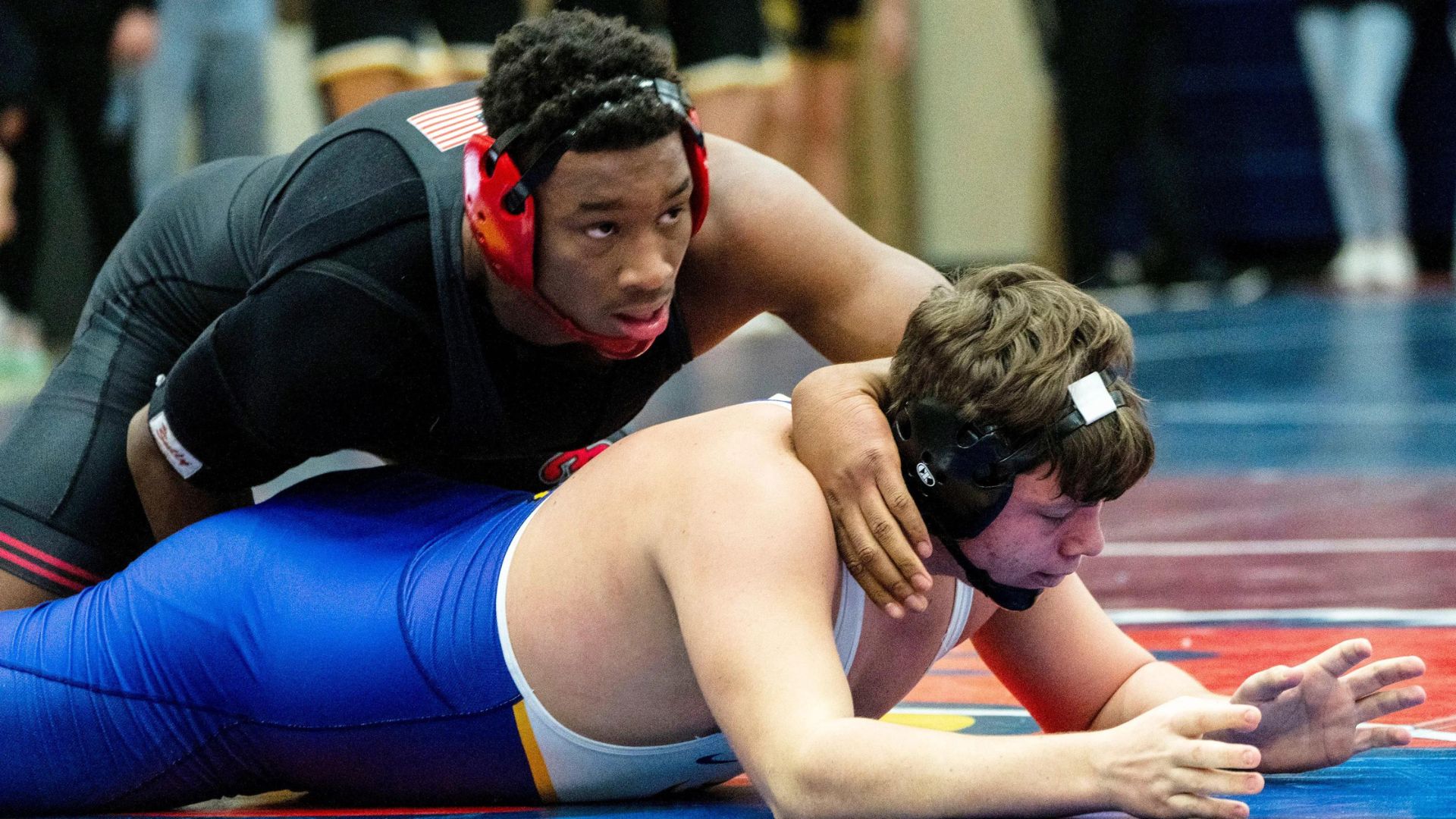
New High School Wrestling Rules in 2024
Calling all wrestling fans! The 2024 season brings a fresh wave of excitement to high school wrestling with the introduction of new high school wrestling rules. These changes aim to make the sport more exciting for both wrestlers and spectators. The focus is on rewarding wrestlers for taking control of the match and creating a clearer set of guidelines for everyone involved. This article looks into the details of the new high school wrestling rules and explains how they will impact the game.
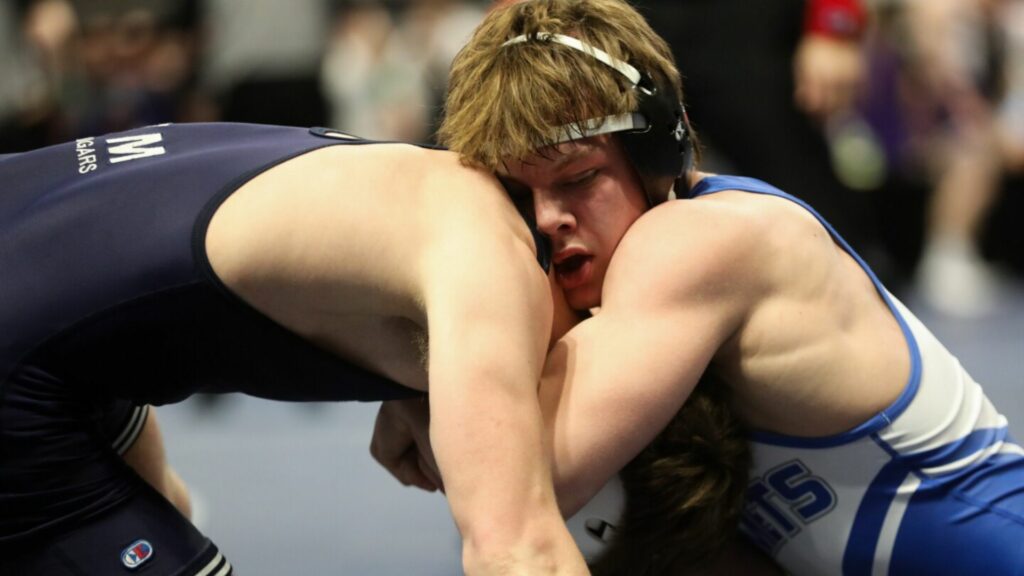
Rewarding Takedowns and Near Falls with a New Scoring System
To begin with, one of the biggest changes involves how points are awarded. Previously, wrestlers earned two points for taking their opponent down to the mat (takedown). Under the new high school wrestling rules, takedowns are now worth a significant three points! Additionally, this puts more emphasis on wrestlers actively taking control of the match and keeping their opponent on the ground.
The scoring system for near falls (almost pinning your opponent) has also been revamped. Before, a two-point near fall was awarded when the referee counted to two, and three points when the referee counted to three. Now, the system is similar to college wrestling: two points for a two-count, three points for a three-count, and a jump to four points for a four-count near fall.
Furthermore, this change encourages wrestlers to work even harder to secure a pin, the ultimate victory in wrestling. By rewarding dominance and offensive manoeuvres, the new high school wrestling rules aim to create more high-scoring and action-packed matches.
Simplifying Out-of-Bounds Calls with a Clearer Rule
Another significant change tackles the often-debated issue of out-of-bounds calls. Previously, both wrestlers needed to have two points of contact outside the wrestling mat to be considered out-of-bounds. This could lead to confusion and disagreements for wrestlers, referees, and spectators alike.
With the new high school wrestling rules, things are much simpler. Now, only one point of contact from either wrestler outside the boundary line is considered out-of-bounds. This clearer rule reduces confusion and allows for more consistent officiating throughout the competition.
Farewell 10-Foot Circle, Hello Focus on Center Mat
For many years, the centre of the wrestling mat was marked by a prominent 10-foot circle. However, the new high school wrestling rules eliminate the need for this circle. The reasoning? Modern wrestling mats already have large logos or mascots in the centre, making the starting lines clear indicators. This change streamlines the look of the mat and ensures wrestlers focus on staying in the central area for optimal control.
Keeping Up with the Changes: Resources for Wrestlers, Parents, and Fans
With the introduction of the new high school wrestling rules, staying informed is key. Here are some resources to help everyone stay up-to-date:
National Federation of State High School Associations (NFHS) Website
The NFHS is the governing body for high school sports in the United States. Their website provides official rulebooks and updates, including details on the new high school wrestling rules.
State High School Athletic Associations
Each state has its athletic association that oversees high school sports. These associations’ websites often provide information on rule changes and interpretations specific to their state.
Wrestling Media Outlets
Additionally, numerous websites and publications specialize in wrestling news and information. These outlets often cover rule changes and provide analysis on how they might impact the sport.
Coaching Clinics and Resources
Wrestling coaches’ associations frequently hold clinics and workshops to discuss new rules and strategies. Furthermore, parents and wrestlers can encourage their coaches to attend these events to stay current on the latest developments.
Here are some additional tips for wrestlers, parents, and fans to embrace the new high school wrestling rules
For Wrestlers:
Practice Makes Perfect: Since takedowns are worth more points now, it’s crucial to practice various takedown techniques. Furthermore, work with your coach to refine your entries, shots, and finishes to effectively score those valuable points.
Near Fall Defense is Key: The new system rewards wrestlers who can hold a near fall for a longer duration. Develop strong escape manoeuvres to prevent your opponent from getting those crucial four points.
Center Stage: Staying in the centre of the mat is even more important under the new rules. Focus on controlling the centre and manoeuvring your opponent to the edge to gain an advantage.
For Parents:
Stay Informed: Familiarize yourself with the key changes in the new high school wrestling rules to better understand your child’s matches and support their training.
Encourage Strategic Thinking: Discuss the new rules with your child and their coach. Help them develop strategies to utilize the new scoring system and outmanoeuvre their opponents.
Positive Reinforcement: The adjustment period might bring some challenges. Additionally, be patient and supportive as your child adapts to the new high school wrestling rules.
For Fans:
Learn the Rules: Understanding the basic changes in the new high school wrestling rules will enhance your enjoyment of the matches.
Appreciate the Strategy: Look beyond basic moves and recognize the strategic thinking involved in takedowns, near falls, and controlling the centre of the mat.
Embrace the Excitement: The new rules aim to create faster-paced and more action-packed matches. Furthermore, cheer on the wrestlers and their displays of athleticism and skill.
Conclusion
In conclusion, by staying informed, adapting strategies, and embracing the changes, the wrestling community can ensure a smooth transition to the new high school wrestling rules. These changes have the potential to make high school wrestling an even more captivating and rewarding experience for everyone involved, from wrestlers and coaches to parents and fans. So, get ready for a thrilling new season of high school wrestling!

Tips to Prevent Gaining Weight for Wrestlers

The Wrestlers’ Top 10 Power Foods
Stepping into the ring requires a body that’s a perfect blend of strength, power, and endurance. For wrestlers, finding the right fuel is crucial. Forget fad diets – wrestlers’ top 10 power foods prioritize sustained energy, muscle building, and recovery. This guide will discuss the nutritional superheroes that power these incredible athletes, helping them perform at their peak.
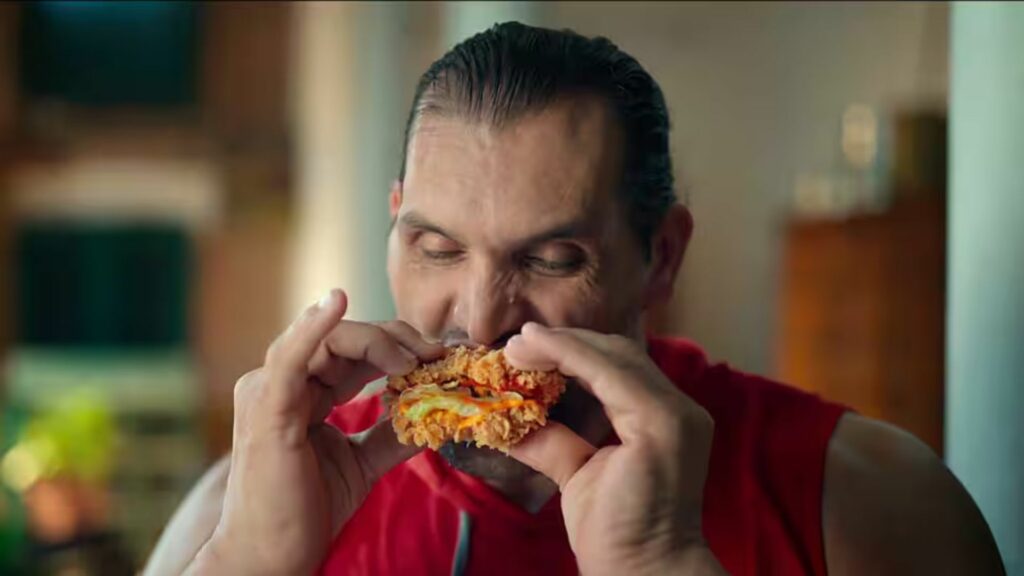
Building the Foundation: Wrestlers’ Top 10 Power Foods (Macros)
To begin with, wrestlers need a balanced approach to nutrition. Here’s a breakdown of the essential macronutrients and some wrestlers’ top 10 power foods that provide them:
Protein (1.2-2 grams per kilogram of body weight)
The building block of muscle, protein is essential for growth, repair, and recovery. Therefore, wrestlers’ top 10 power foods rich in protein include lean meats (chicken, fish), eggs, Greek yoghurt, lentils, and beans.
Carbohydrates (45-65% of daily calories)
Additionally, in fueling intense training sessions, carbohydrates provide sustained energy. Moreover, complex carbs are preferred, as they release energy slowly. Wrestler’s top 10 power foods high in complex carbs include whole grains (brown rice, quinoa), sweet potatoes, and fruits (bananas, berries).
Healthy Fats (20-35% of daily calories)
Healthy fats play a vital role in hormone production, cell function, and satiety. Therefore, wrestler’s top 10 power foods with healthy fats include avocados, nuts (almonds, walnuts), and fatty fish (salmon, tuna).
Power Up Your Plate: Wrestlers’ Top 10 Power Foods (Specific Examples)
Now, let’s look into specific examples of wrestlers’ top 10 power foods:
Chicken Breast
Packed with protein and low in fat, chicken breast is a staple in a wrestler’s diet.
Eggs
A complete protein source, eggs also offer essential vitamins and minerals for overall health.
Greek Yogurt
Additionally, high in protein and calcium, Greek yoghurt provides sustained energy and promotes muscle recovery.
Lentils and Beans
These vegetarian protein powerhouses are also rich in fibre and complex carbs, keeping wrestlers feeling full and energized.
Brown Rice and Quinoa
Moreover, complex carbohydrates in brown rice and quinoa provide sustained energy for long training sessions.
Sweet Potatoes
Loaded with vitamins and complex carbs, sweet potatoes offer a healthy alternative to white potatoes.
Bananas
A natural source of potassium for muscle function, bananas are a great pre-workout or post-workout snack.
Berries
Rich in antioxidants and vitamins, berries offer a delicious and healthy way to fuel the body.
Avocados
Moreover, healthy fats in avocados aid in nutrient absorption and contribute to a feeling of satiety.
Nuts
A convenient source of healthy fats, protein, and fibre, nuts are perfect for a quick and nutritious pre-workout snack.
Beyond the Plate: Optimizing Nutrition for Wrestlers
While wrestlers’ top 10 power foods are a great starting point, remember:
Hydration is Key
Wrestlers lose a lot of fluids during training. Additionally, staying hydrated with water throughout the day is crucial.
Portion Control Matters
Even healthy foods need to be consumed in moderation. A registered dietitian can help wrestlers create a personalized meal plan.
Listen to Your Body
Furthermore, every wrestler is different. It’s important to pay attention to individual needs and adjust food choices accordingly.
Pre and Post-Workout Nutrition
Focus on protein and carbohydrates for pre-workout meals to fuel training and on protein and complex carbs for post-workout meals to aid recovery.
Micronutrients Matter
Additionally, vitamins and minerals play a crucial role in overall health and performance. Furthermore, include fruits, vegetables, and whole grains in your diet to ensure you’re getting the necessary micronutrients.
Consider Supplements
While not a replacement for a healthy diet, talking to a sports nutritionist about protein powder or creatine may be beneficial for some wrestlers.
Conclusion
In conclusion, by incorporating wrestlers’ top 10 power foods into their diet, prioritizing overall nutritional needs, and implementing additional strategies like pre/post-workout nutrition and considering micronutrients, wrestlers can fuel their bodies for peak performance. Remember, the journey to becoming a champion wrestler is a marathon, not a sprint. Fuel your body, train smart, and unleash your inner champion!

The Best Drink for Wrestlers
Are you a wrestler looking to enhance your performance on the mat? Look no further! In this comprehensive guide, we’ll explain in detail the secret to staying hydrated and energized with the best drink for wrestlers. Choosing the right beverage can make all the difference in optimizing your performance and achieving your goals. Get ready to quench your thirst and fuel your success with the ultimate hydration heroes for wrestlers!

Importance of Hydration for Wrestlers
Hydration is crucial for wrestlers to maintain optimal performance and health both on and off the mat. Dehydration can lead to decreased energy levels, impaired cognitive function, and reduced physical performance, making it essential for wrestlers to prioritize proper fluid intake throughout the day. Hydration plays a vital role in regulating body temperature, lubricating joints, and transporting nutrients and oxygen to muscles, all of which are critical for wrestling success.
Key Factors to Consider in Choosing the Best Drink
When it comes to selecting the best drink for wrestlers, several factors should be taken into consideration:
Hydration Needs
Wrestlers have unique hydration needs due to the intense physical demands of the sport. It’s essential to choose beverages that replenish fluids lost through sweating during training and competition.
Electrolyte Balance
Electrolytes such as sodium, potassium, and magnesium are lost through sweat and play a crucial role in maintaining hydration and muscle function. The best drinks for wrestlers should contain electrolytes to help replace those lost during intense activity.
Carbohydrate Content
Carbohydrates are a primary source of energy for wrestlers and can help sustain performance during prolonged training sessions or matches. Choosing beverages with a moderate amount of carbohydrates can provide a valuable energy boost without causing gastrointestinal discomfort.
Taste Preferences
While the nutritional content of a drink is essential, taste preferences also play a role in hydration. Wrestlers are more likely to consume adequate fluids if they enjoy the taste of the beverage, so it’s essential to choose drinks that are palatable and satisfying.
The Best Drink Options for Wrestlers
Now that we’ve covered the key factors to consider let’s explore some of the best drink options for wrestlers:
Water
Water is the most basic and essential beverage for hydration and should be the primary drink choice for wrestlers. It’s calorie-free, refreshing, and readily available, making it an excellent option for maintaining hydration throughout the day.
Sports Drinks
Sports drinks are formulated to replenish fluids, electrolytes, and carbohydrates lost during intense physical activity. They can be particularly beneficial for wrestlers during long training sessions or matches, providing both hydration and energy to sustain performance.
Electrolyte Drinks
Electrolyte drinks, such as coconut water or electrolyte-enhanced beverages, are another excellent option for wrestlers. These beverages provide essential electrolytes to help maintain hydration and support muscle function, making them an ideal choice for replenishing fluids lost through sweat.
Homemade Hydration Solutions
Wrestlers can also create their hydration solutions using a combination of water, electrolytes, and carbohydrates. Mixing water with a pinch of salt and a splash of fruit juice can create a homemade electrolyte drink that’s both cost-effective and hydrating.
Tips for Optimal Hydration
In addition to choosing the best drink for wrestlers, here are some tips to help optimize hydration:
Drink Early and Often
Start hydrating well before training or competition and continue to drink fluids regularly throughout the day. Waiting until you’re thirsty to drink can lead to dehydration, so aim to stay ahead of your fluid needs.
Monitor Urine Color
Monitoring urine colour is a simple way to assess hydration status. Pale yellow urine indicates adequate hydration, while dark yellow urine may indicate dehydration.
Rehydrate After Exercise
After training or competing, be sure to replenish fluids lost through sweat by drinking water or a hydrating beverage. Aim to consume fluids containing electrolytes to help restore hydration balance.
Consider Individual Needs
Hydration needs can vary depending on factors such as body size, sweat rate, and environmental conditions. Listen to your body and adjust your fluid intake accordingly to meet your individual hydration needs.
Conclusion
In conclusion, the best drink for wrestlers is one that effectively replenishes fluids, electrolytes, and carbohydrates lost during training and competition. Water, sports drinks, electrolyte drinks, and homemade hydration solutions are all excellent options for wrestlers looking to optimize hydration and performance. By prioritizing proper fluid intake, monitoring hydration status, and choosing beverages that meet their individual needs, wrestlers can stay hydrated and energized to perform at their best on the mat.

The Best Wrestling Diet for Weight Loss
Are you a wrestler striving to reach your weight class goals and dominate on the mat? Look no further! In this comprehensive guide, we’ll explore the secrets to success with the best wrestling diet for weight loss. Whether you’re preparing for competition season or aiming to improve your performance, this guide will provide you with the nutrition tips, meal plans, and strategies you need to shed pounds effectively and safely. Get ready to step into the ring with confidence and determination as you embark on your journey to a leaner, stronger physique!

Understanding the Importance of Nutrition in Wrestling
Nutrition plays a crucial role in wrestling performance, affecting energy levels, strength, endurance, and weight management. Wrestlers must fuel their bodies with the right balance of nutrients to optimize performance and achieve their weight loss goals. The best wrestling diet for weight loss focuses on providing the body with the fuel it needs while promoting fat loss and preserving muscle mass.
Key Components of the Best Wrestling Diet for Weight Loss
Calorie Deficit
To lose weight effectively, wrestlers need to create a calorie deficit by consuming fewer calories than they expend. This can be achieved through a combination of dietary changes and increased physical activity.
Macronutrient Balance
The best wrestling diet for weight loss emphasizes a balanced intake of macronutrients, including carbohydrates, proteins, and fats. Carbohydrates provide energy for workouts and matches, while proteins support muscle repair and growth, and fats aid in hormone production and nutrient absorption.
Hydration
Proper hydration is essential for optimal wrestling performance and weight loss. Wrestlers should aim to drink plenty of water throughout the day to stay hydrated and support metabolic function.
Sample Meal Plan for the Best Wrestling Diet for Weight Loss
Here’s a sample meal plan that incorporates the key components of the best wrestling diet for weight loss:
Breakfast:
- Scrambled eggs with vegetables
- Whole grain toast
- Greek yoghurt with berries
Lunch:
- Grilled chicken breast
- Quinoa salad with vegetables
- Mixed greens with olive oil and vinegar dressing
Snack:
- Apple slices with almond butter
- Protein shake with almond milk
Dinner:
- Baked salmon
- Steamed broccoli
- Brown rice
Strategies for Success
In addition to following a balanced meal plan, wrestlers can incorporate the following strategies to maximize their weight loss success:
Portion Control
Pay attention to portion sizes and avoid overeating, even when consuming healthy foods.
Meal Timing
Moreover, eat regular meals and snacks throughout the day to keep energy levels stable and prevent overindulging later on.
Mindful Eating
Additionally, practice mindful eating by savouring each bite, eating slowly, and paying attention to hunger and fullness cues.
Physical Activity
In addition to wrestling practice, incorporate regular physical activity into your routine to support weight loss and overall health.
Nutrient Timing
Furthermore, paying attention to when you consume nutrients can also impact weight loss and performance. For example, consuming a meal or snack containing carbohydrates and protein within 30 minutes to an hour after a workout can help replenish glycogen stores and support muscle repair and growth. Additionally, eating a balanced meal or snack before bed can help prevent late-night cravings and support recovery overnight.
Focus on Whole Foods
When planning meals and snacks, prioritize whole, minimally processed foods that are rich in nutrients and support overall health. Include plenty of fruits, vegetables, lean proteins, whole grains, and healthy fats in your diet to ensure you’re getting essential vitamins, minerals, and antioxidants. Additionally, avoid or limit highly processed foods, sugary snacks, and fried foods, which can contribute to weight gain and negatively impact performance.
Conclusion
In conclusion, the best wrestling diet for weight loss is one that emphasizes balanced nutrition, calorie control, and hydration while supporting optimal performance on the mat. By following a structured meal plan, incorporating healthy eating habits, and staying consistent with physical activity, wrestlers can achieve their weight loss goals safely and effectively. So lace up your wrestling shoes, fuel your body with the right nutrients, and step into the ring with confidence as you work towards a leaner, stronger physique with the best wrestling diet for weight loss.

Exploring the World of Wrestling Documentaries
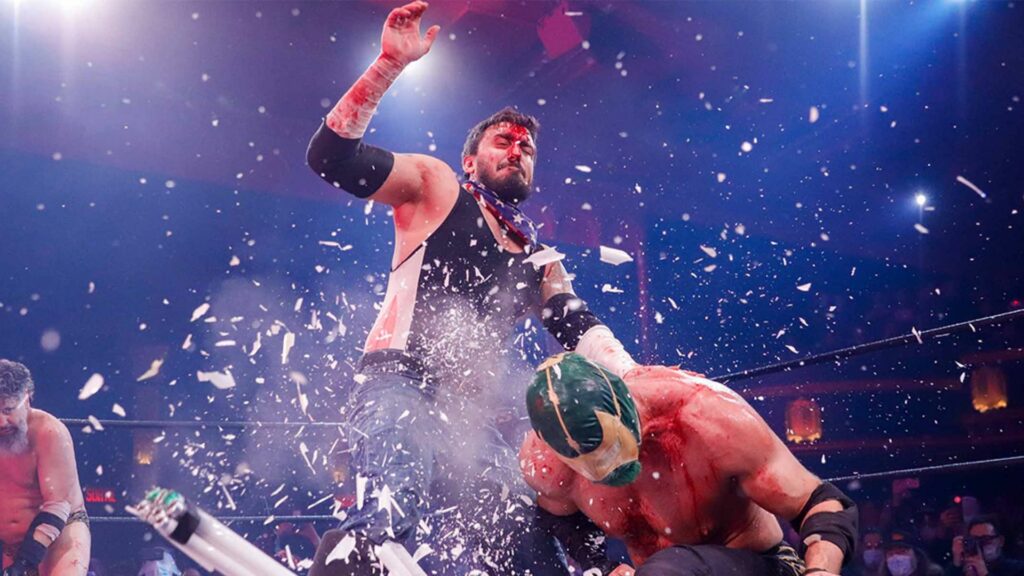
The Rise of Wrestling Documentaries
In recent years, wrestling documentaries have experienced a surge in popularity. Additionally, offering fans an unprecedented glimpse behind the curtain of their favourite sport. From the emotional highs of championship victories to the heartbreaking lows of career-ending injuries, these films capture the essence of what it means to be a professional wrestler. With unprecedented access to wrestlers, promoters, and industry insiders, wrestling films provide a ringside seat to the highs. They also provide lows, and everything in between of this unique world.
The Heart of Wrestling Documentaries
At the core of many wrestling films are the legendary rivalries that have defined the sport for generations. From the epic battles between Hulk Hogan and Andre the Giant to the bitter feuds of Stone Cold Steve Austin and The Rock, these rivalries captivated audiences and helped elevate professional wrestling to new heights of popularity. Wrestling documentaries look deep into these iconic matchups. Furthermore, they explore the personal and professional animosities that fueled them and the impact they had on the wrestlers involved.
Unveiling the Realities of Wrestling
While the world of professional wrestling may be filled with larger-than-life characters and scripted storylines, wrestling films reveal the often harsh realities behind the spectacle. From the gruelling training regimens to the toll that years of physical punishment can take on the body, these films offer an unfiltered look at the sacrifices made by wrestlers in pursuit of their dreams. Wrestling documentaries pull back the curtain on the backstage drama. Furthermore, they showcase the politics, rivalries, and personal struggles that shape the lives of those involved in the industry.
Wrestlers in Their Own Words
One of the most compelling aspects of wrestling films is the opportunity for wrestlers to tell their own stories. Additionally, the stories are in their own words. Through candid interviews and personal reflections, wrestlers open up about their triumphs. Also, their failures, and the challenges they’ve faced both inside and outside the ring. Wrestling documentaries humanize these larger-than-life figures, allowing fans to see the people behind the personas. Additionally, gaining a deeper understanding of the sacrifices and struggles that come with life in the wrestling world.
The Enduring Influence of Wrestling Documentaries
As we reflect on the impact of wrestling documentaries, it’s clear that their influence extends far beyond the confines of the wrestling ring. These films offer fans an intimate look at the lives of their favourite wrestlers. Also, shining a light on the triumphs and tribulations that have shaped the sport. By capturing the drama, passion, and emotion of professional wrestling, wrestling documentaries ensure that the legacy of the sport will endure for generations to come.
Conclusion
In conclusion, wrestling films offer fans a ringside perspective on the drama, the passion, and the larger-than-life personalities. Additionally, this defines the world of professional wrestling. From legendary rivalries to behind-the-scenes revelations, these films provide an intimate look at the triumphs and tribulations of life in the wrestling industry. As the popularity of wrestling documentaries continues to grow, they will undoubtedly remain a vital part of the wrestling landscape, preserving the legacy of the sport for future generations to enjoy.

The Impact of Wrestling Video Games
In the world of sports entertainment, the influence of wrestling extends far beyond the confines of the ring. Wrestling video games have played a significant role in shaping the way fans interact with their favourite superstars. Additionally, they introduced new audiences to the excitement of the squared circle. They also influenced the direction of the wrestling industry itself. In this exploration, we look deeper into the impact of wrestling video games. Furthermore, we will trace their evolution from simple arcade titles to immersive digital experiences that captivate players worldwide.
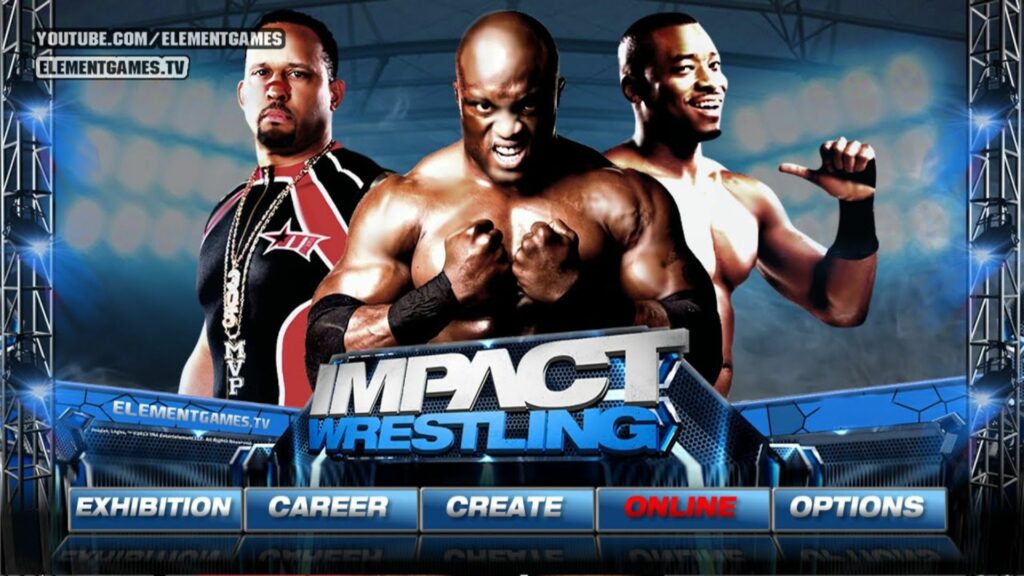
The Evolution of Wrestling Video Games
Since the early days of gaming, wrestling has been a popular subject for video game developers. Additionally, especially, for those looking to capture the excitement and drama of the sport. From the pixelated brawls of classic arcade titles to the stunning realism of modern console releases, wrestling video games have undergone a remarkable evolution. As technology has advanced, so too have the graphics, gameplay mechanics, and storytelling capabilities of these virtual experiences. Furthermore, this creates increasingly immersive and engaging worlds for players to explore.
Connecting Fans Worldwide
One of the most significant impacts of wrestling video games is their ability to bring fans together from around the world. Online multiplayer modes allow players to compete against each other in epic showdowns, form alliances, and create their wrestling federations. Through forums, social media groups, and online communities, fans share strategies, discuss the latest releases, and connect with like-minded individuals who share their passion for wrestling and gaming. Wrestling video games have become a catalyst for building friendships and fostering a sense of camaraderie among fans.
Influence on Pop Culture
Wrestling video games have permeated popular culture. Additionally, leaving an indelible mark on everything from movies and television to music and fashion. Iconic characters and catchphrases from wrestling video games have become ingrained in the collective consciousness, transcending the boundaries of the gaming world. The influence of wrestling video games can be seen in merchandise, fan art, and even professional wrestling storylines, blurring the lines between fiction and reality and further blurring the lines between fiction and reality.
Shaping the Sport
The impact of wrestling video games isn’t limited to fandom. Games can also influence the sport itself. Player feedback and preferences regarding characters, storylines, and gameplay mechanics can be valuable data for wrestling promotions and video game developers alike. This creates a feedback loop, where aspects of the game can translate into real-world storylines and vice versa. For example, a wrestler who becomes a breakout star in a video game might receive a push in a wrestling promotion due to the newfound fan interest.
Introducing New Audiences to Wrestling
For many fans, wrestling video games serve as an entry point into the world of professional wrestling. Through immersive gameplay experiences, players are introduced to iconic wrestlers, memorable moments, and the rich history of the sport. Wrestling video games provide a platform for fans to engage with their favourite wrestlers in new and exciting ways. Whether they’re reliving classic matches or creating their dream matchups. By attracting new audiences to the sport, wrestling video games help to ensure its continued relevance and longevity.
Impact on Wrestling Promotions
The impact of wrestling video games extends beyond the realm of entertainment, influencing the direction of the wrestling industry itself. Video game sales and popularity can directly impact the visibility and marketability of wrestling promotions and individual wrestlers. Successful video game releases can elevate a wrestler’s status, increase merchandise sales, and even influence booking decisions within the promotion. Conversely, poor reception or controversy surrounding a video game can have negative repercussions for both the promotion and its talent.
Conclusion
In conclusion, as we reflect on the impact of wrestling video games, it’s clear that their influence extends far beyond the virtual world. From building communities and expanding the fanbase to shaping pop culture and influencing the wrestling industry, wrestling video games have left an indelible mark on the world of sports entertainment. Additionally, as technology continues to evolve, so too will the experiences offered by wrestling video games, ensuring that their legacy continues to grow for generations to come.

